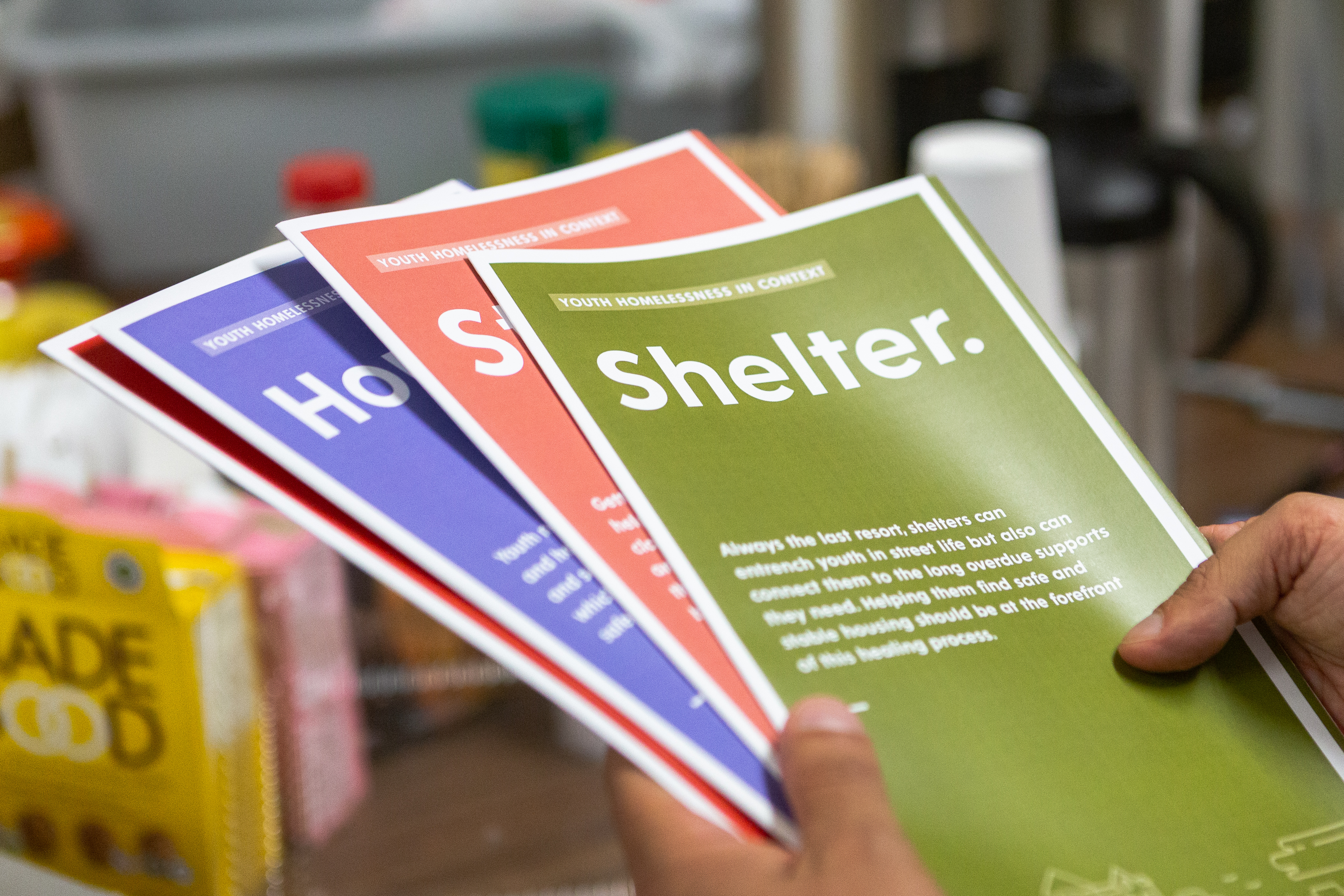
Getting youth home: A research shareback
Author

- Mirusha Yogarajah
- Project Journalist
On Tuesday, July 9, Bridgeable’s Designership team, subject matter experts, and community stakeholders gathered together to discuss the team’s insights on guiding youth to a place where they feel at home. The Hamilton Regional Indian Centre (HRIC) greeted us with the sweet scent of sage. The voices of living experts on homelessness were brought to life in the meeting room with six life murals created by youth. These murals reinforced the themes of the day—weaving youth voices into our work and guiding them home.

The life mural created by youth were framed and displayed at the research readout, ensuring that the voices of young people who have experienced homelessness were front and centre of the session.
The presentation, titled “Getting home: Understanding youth needs in context,” began by reemphasizing the importance of connecting policy development and service design. Human-centred design, in particular, allows policymakers to simulate the delivery of services to highlight potential challenges of policy delivery. Our project this summer is focused on how to use a design approach to prototype and test key components of the Welsh Duty to Assist model in Hamilton, Ontario to prevent, reduce, and avoid youth homelessness.
As we’ve learned through research, youth have differing definitions of “home.” It’s not just a place to go to at the end of the day and is far more than a roof and four walls. Youth who we spoke with described home as a community or a village, a path or a journey. Ultimately, we learned that being at home is feeling safety, peace, comfort, and love. It’s a place to be oneself and not feel judged by others. Understanding that home isn’t necessarily a physical place guided us to the real challenge: what needs to happen to guide youth to a place in their lives where they feel at home?
To help policy decision makers and service providers understand the needs of youth in context, we developed a series of strategic research artifacts: a brochure and poster series, policy principle cards, and a framework that weaves together the principles of Duty of Assist with the needs of youth.
Brochures and posters
The brochures included evocative scenarios that capture the day-to-day challenges youth face in school, on the street, in shelters, and when housed. These were four settings identified by youth and frontline workers as particularly key to youth in shaping their relationships with home, culture, community, and identity. This series of brochures brings to life the everyday challenges youth face when struggling to find their way home. Each scenario represents a composite of multiple youth stories and also reflects the accounts we heard from non-youth participants.

A participant looking through brochures describing four contexts—school, street, shelters, and housed.
Youth-centred principles
The youth-centred principles are the social, emotional, cultural and physical needs of youth. These needs must be addressed to guide youth home. Through these six principles, the youth voice will be front and centre in all of the work that we do this summer.
Policy principles
The policy principle cards are recommendations from the Canadian Observatory on Homelessness’s Roadmap for the Prevention of Youth Homelessness distilled into a set of six principles to guide our work. These cards are meant to be used as a quick-glance reference for the Roadmap, which is our comprehensive, go-to resource for Duty to Assist. Each policy principle card outlines a key element of Duty to Assist from the perspective of youth, service providers, and policymakers—key actors to make Duty to Assist a reality in Ontario. We will use these cards to facilitate the integration of Duty to Assist principles throughout all programs and services going forward.
Guiding framework
Lastly, the framework weaves together the needs of youth with the principles of Duty to Assist, bridging together policy and delivery. Each youth-centred principle aligns with a companion policy principle. For example, the policy principle of “inclusive and culturally appropriate” aligns with the youth-centred principle “connect me to community and celebrate my identity.”
All together, these artifacts represent a series of strategic tools intended to help connect the policy and service by placing the perspective of youth experts at the forefront. They also translate complex ideas around the needs and barriers that youth face when experiencing homelessness into accessible and relatable scenarios.
 A participant looking through a research artifact that distills the Duty to Assist policy into six actionable policy principle.
A participant looking through a research artifact that distills the Duty to Assist policy into six actionable policy principle.
On deck: Our research findings take us one step closer to the co-creation session that the team is hosting on July 19 in Hamilton.